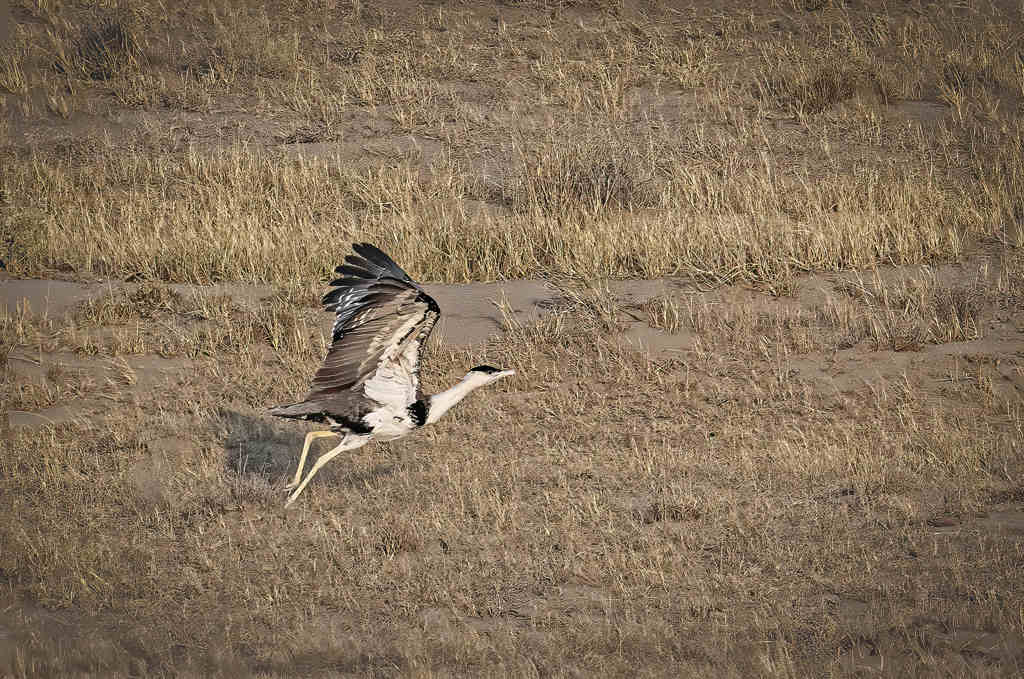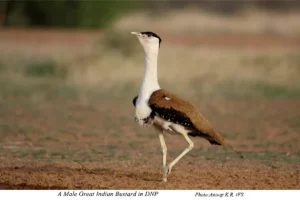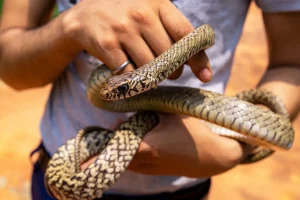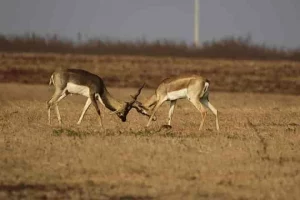The Great Indian Bustard (GIB), found only in India, is getting a new lease of life. Last Monday, the Supreme Court stepped in to protect the most endangered species on the planet.
Determined to shore up the plunging numbers of the endangered the GIB, the Supreme Court observed that it can consider directing under-grounding of the low voltage transmission lines in Rajasthan and Gujarat, and installation of bird diverters in case of high transmission lines, for protection of the GIB. The three-judge bench headed by the Chief Justice of India, said that in the case of high voltage transmission lines which can't be made underground, the court could direct installation of diverters even if recurring costs are high, and the low tension lines can be made underground.
"In principle we see the importance of making lines underground. We don't think all lines must be made underground. We would like to see the corridor that the animals use, and would like to make those underground,” the Bench observed, “It is well known that the Great Indian Bustard (GIB) is a large bird and it finds difficulty in manoeuvring easily around transmission lines.”
With poor vision and high body mass, GIBs are highly vulnerable to collisions with power lines in its habitat in the Desert National Park in Jaisalmer, Rajasthan. A significant population dies each year from such accidents. These accidents lead to death from electrocution, impact trauma, or as a result of injuries suffered.
A report by the Wildlife Institute of India (WII), Dehradun, says that the bird has poor frontal vision, which restricts it from spotting power lines early. “…About 15% of the population (dies) due to the power lines in Jaisalmer alone. This, in comparison to the natural cause of deaths contributed only 4% to 5% cases,” the report says.
Once the frontrunner to be named India’s national bird, the Great Indian Bustard has long been on the brink of extinction. It is one of the heaviest flying birds, and is found mainly in the Indian subcontinent. Barely 150 of these birds are estimated to be surviving globally. However, a major conservation effort launched about 10 years ago is bringing a ray of hope.
Since June 2019, nine GIB eggs collected from the Desert National Park in Jaisalmer, where a conservation centre has been set up, have hatched, and the chicks are reported to be doing well. This is the largest number of hatchings reported within a six-month frame by any GIB conservation programme in the world, say the media reports.
Biologist Dr Sumit Dookia, associated with the conservation of GIB projects excitedly shared the birth of a new chick last year during lockdown.
The species recovery programme is part of the Rajasthan government's plan to steadily build up a population of 25 bustards in captivity and release them in the wild. The GIB project is a joint effort of the Rajasthan wildlife department, WII, the Union Ministry of Environment, Forest and Climate Change and the Abu Dhabi-based International Fund for Houbara Conservation (IFHC).
Local communities are playing an important part to save their “Godawan” as GIB known in Rajasthan. Historically, its decline was set in motion by widespread hunting for food and sport. Today, its woes are compounded by habitat loss due to urbanisation and the expansion of agriculture. With humans come domestic animals: stray dogs are currently one of the biggest risks to both adult birds and the single egg they lay each year.
At first sight, the GIB certainly doesn’t look as if it needs protecting. Towering at a metre tall, this imposing, robust bird struts slowly through the grasslands as if it owned the place. And once upon a time, it did. Formerly widespread and abundant, this bustard made yearly journeys between India and Pakistan.
According to the IUCN Red List, which is the world's most comprehensive inventory of the conservation status of species, the GIB is critically endangered. In India, this state bird of Rajasthan is listed in Schedule-I of the Wildlife Protection Act.
Even Prime Minister Narendra Modi pledged to coordinate the conservation of all migratory birds along the Central Asian Flyway, a major migration route that formerly lacked any institutional framework. Thanks to this milestone, every major flyway in the world now has a formal plan connecting conservation action in every country along the way.
While efforts are on to protect GIBs in India, their cousin The Asian houbara bustard, also known as MacQueen’s bustard in Pakistan are not so lucky. The Arab royals hunt the bird as a sport and also because its meat is believed to be an aphrodisiac. Hunting bustards is illegal in most countries including Pakistan but the decision was withdrawn in 2016 because the practice has become a foreign policy instrument for Pakistan.




















